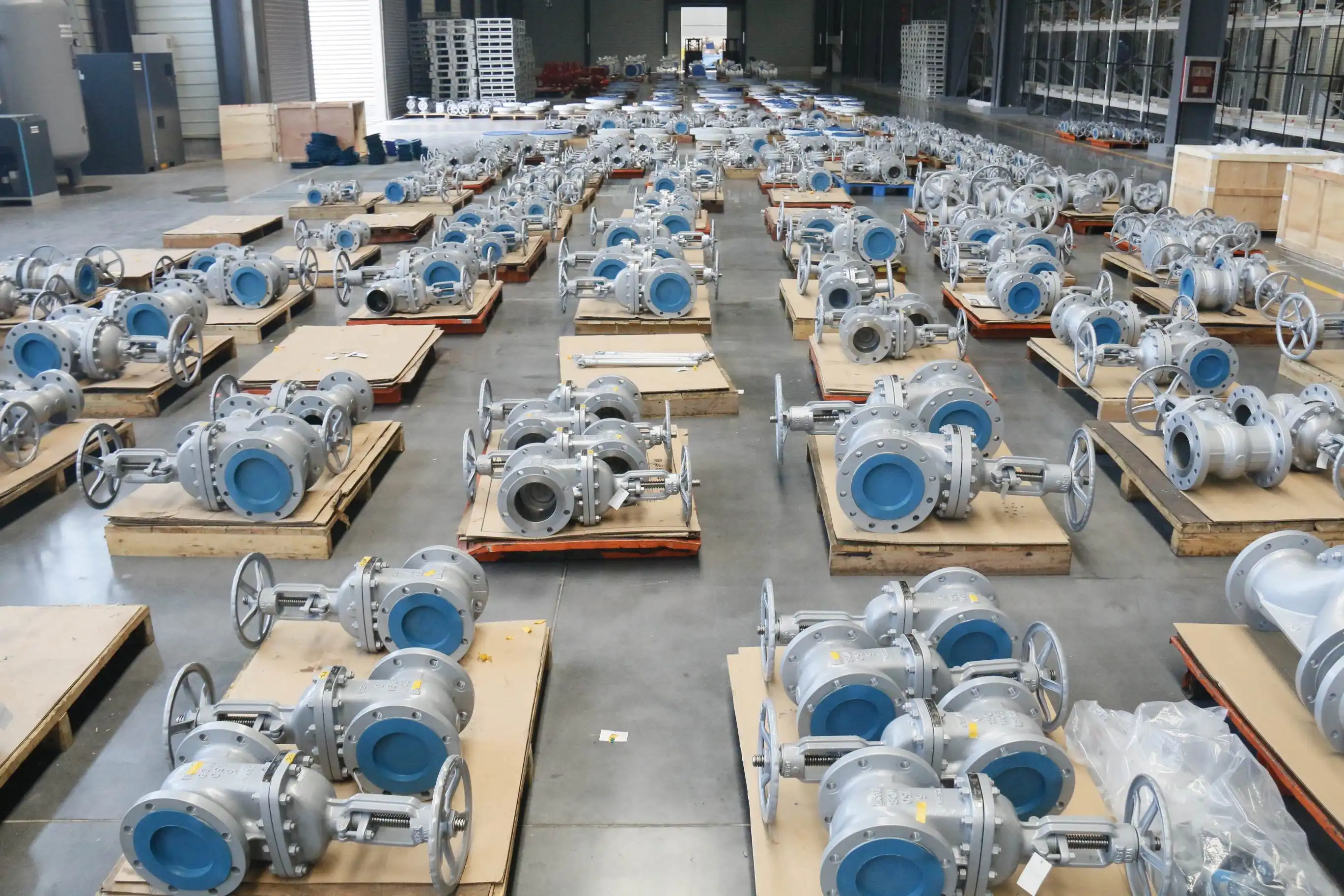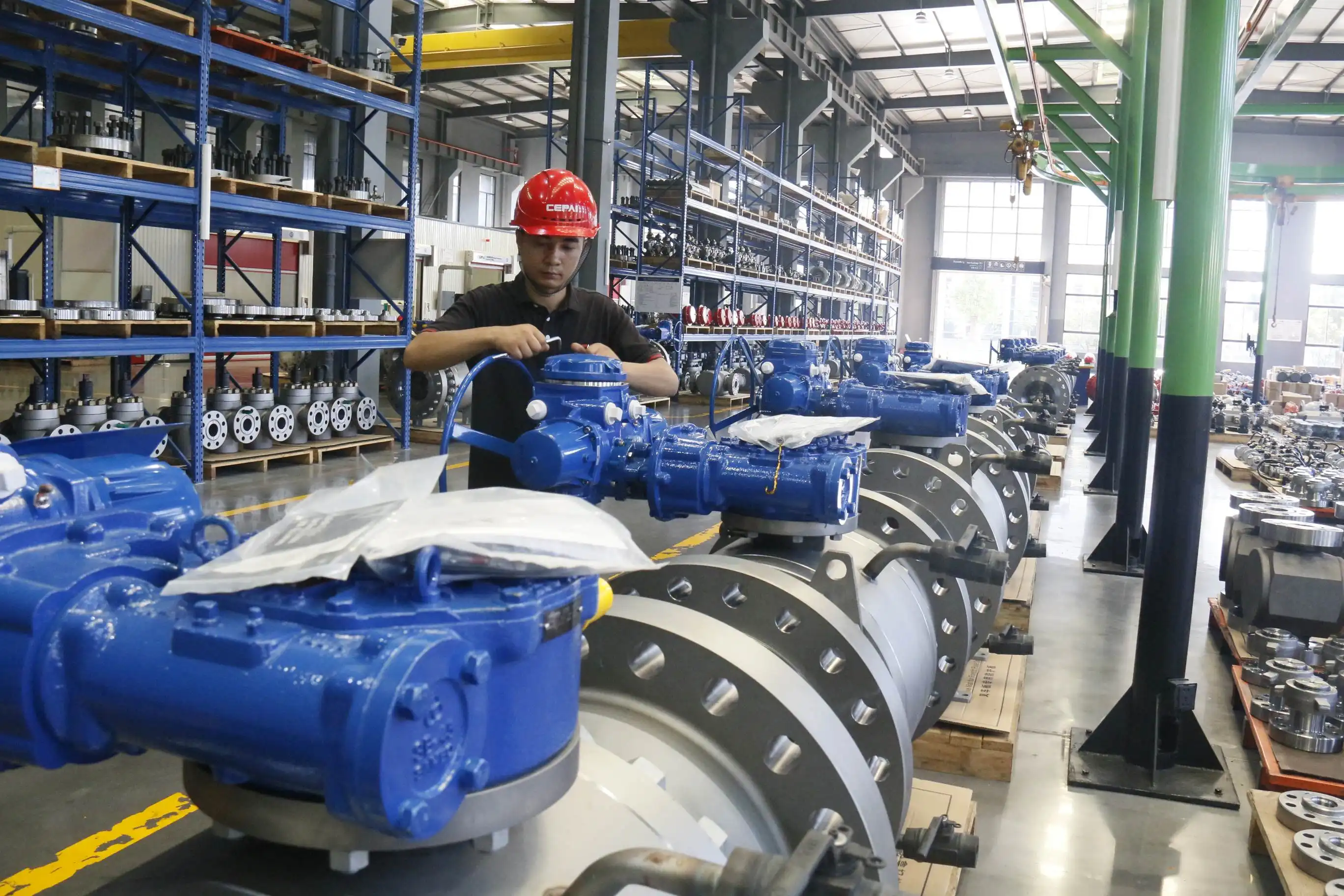Best Pneumatic Valves for Corrosive Fluids
When it comes to handling corrosive fluids in industrial applications, selecting the right pneumatic control valve is crucial for maintaining operational efficiency and preventing costly failures. The best pneumatic valves for corrosive fluids must demonstrate exceptional chemical resistance, robust construction, and reliable performance in harsh environments. These specialized Pneumatic Control Valve systems are engineered with advanced materials such as duplex stainless steel, Hastelloy, or specialized coatings that can withstand aggressive chemicals while maintaining precise flow control. Understanding the critical factors that determine valve performance in corrosive applications enables engineers to make informed decisions that protect both equipment integrity and process reliability.
Material Selection and Chemical Resistance
Advanced Alloy Compositions for Corrosive Service
The foundation of any effective Pneumatic Control Valve designed for corrosive fluids lies in its material composition. Premium-grade duplex stainless steels, including 2205 and 2507 variants, offer superior resistance to pitting and crevice corrosion compared to conventional stainless steel options. These materials combine the benefits of austenitic and ferritic stainless steels, providing enhanced strength and corrosion resistance. Hastelloy alloys, particularly C-276 and C-22, demonstrate exceptional performance in hydrochloric acid, sulfuric acid, and mixed acid environments. The molecular structure of these superalloys creates a protective oxide layer that regenerates when damaged, ensuring long-term protection against chemical attack. Manufacturing processes for these specialized Pneumatic Control Valve components require precise heat treatment and controlled cooling to maintain optimal metallurgical properties and corrosion resistance characteristics.
Protective Coating Technologies and Surface Treatments

Modern Pneumatic Control Valve designs incorporate advanced coating technologies that provide additional protection against corrosive media. Ceramic coatings, including aluminum oxide and chromium carbide variants, create an impermeable barrier that prevents direct contact between the fluid and base metal. These coatings maintain their protective properties at elevated temperatures and pressures commonly encountered in industrial processes. Electroless nickel plating with PTFE co-deposition offers both corrosion resistance and reduced friction, improving valve performance and extending service life. The application of these coatings requires specialized surface preparation techniques, including grit blasting and chemical etching, to ensure proper adhesion and coating integrity. Quality control measures throughout the coating process, including thickness measurement and adhesion testing, guarantee that each Pneumatic Control Valve meets stringent performance standards.
Elastomer and Seal Material Optimization
The selection of appropriate elastomer materials for seals and gaskets represents a critical aspect of Pneumatic Control Valve design for corrosive applications. Perfluoroelastomer (FFKM) seals provide unmatched chemical resistance across a broad spectrum of aggressive chemicals while maintaining flexibility at extreme temperatures. Kalrez and Chemraz compounds demonstrate exceptional performance in applications involving strong acids, bases, and organic solvents. These advanced elastomers maintain their sealing properties without swelling, hardening, or degradation when exposed to corrosive media. The manufacturing process for these specialized seals involves precise vulcanization temperatures and times to achieve optimal cross-linking density. Regular inspection and replacement schedules for elastomeric components ensure continued reliability of the Pneumatic Control Valve system throughout its operational lifecycle.
Design Features for Enhanced Durability
Structural Engineering for Corrosive Environments
The mechanical design of Pneumatic Control Valve systems for corrosive service incorporates several key features that enhance durability and performance. Thick-walled construction provides additional material allowance for corrosion, extending valve life beyond standard designs. Strategic placement of wear-resistant inserts in high-velocity areas prevents erosion-corrosion, a common failure mode in systems handling abrasive or high-velocity corrosive fluids. The valve body geometry is optimized to minimize turbulence and dead zones where corrosive media might accumulate and cause localized attack. Internal surface finishes achieve specified roughness parameters that reduce the likelihood of crevice corrosion and facilitate cleaning procedures. These design considerations require extensive computational fluid dynamics analysis and experimental validation to ensure optimal performance under actual operating conditions.
Advanced Actuator Systems and Control Integration
Pneumatic actuator systems designed for corrosive environments feature specialized materials and protective measures that ensure reliable operation. Corrosion-resistant actuator housings manufactured from aluminum alloy or stainless steel prevent degradation of internal components. Internal surfaces receive protective coatings or anodizing treatments that resist chemical attack from process vapors or cleaning agents. The integration of smart positioner technology enables precise control and monitoring of Pneumatic Control Valve position, providing real-time feedback on valve performance and condition. Advanced diagnostic capabilities detect developing problems before they result in valve failure, enabling predictive maintenance strategies that minimize unplanned downtime. These intelligent systems communicate through industry-standard protocols, facilitating integration with existing plant control systems.
Innovative Sealing Technologies and Maintenance Features
Modern Pneumatic Control Valve designs incorporate innovative sealing technologies that simplify maintenance while ensuring leak-tight operation in corrosive service. Live-loaded packing systems automatically compensate for normal wear and thermal cycling, maintaining stem seal integrity throughout the valve's operational life. Bellows-sealed designs eliminate the need for dynamic stem seals, providing zero-leakage performance in critical applications. Quick-disconnect features enable rapid actuator removal for maintenance without disturbing process piping connections. Modular construction allows individual component replacement without complete valve removal, reducing maintenance time and costs. These design features reflect decades of field experience and engineering innovation, resulting in Pneumatic Control Valve systems that deliver reliable performance with minimal maintenance requirements.
Performance Optimization and Testing Standards
Comprehensive Testing Protocols for Corrosive Service
The validation of Pneumatic Control Valve performance in corrosive applications requires comprehensive testing protocols that simulate actual operating conditions. Accelerated corrosion testing using standardized solutions and elevated temperatures provides data on long-term material performance and degradation rates. Electrochemical testing techniques, including potentiodynamic polarization and electrochemical impedance spectroscopy, characterize the corrosion behavior of valve materials in specific chemical environments. Flow testing under corrosive conditions validates hydraulic performance and confirms that corrosion products do not adversely affect valve operation. These testing programs generate extensive data that supports material selection decisions and provides confidence in valve performance predictions. The results of these tests form the basis for warranty coverage and service life estimates provided to end users.

Quality Assurance and Certification Requirements
Manufacturing quality systems for Pneumatic Control Valve production in corrosive service applications must meet stringent international standards. ISO 9001 quality management systems provide the framework for consistent product quality and continuous improvement processes. API 6D and API 6A specifications define specific requirements for valves used in petroleum and natural gas industries, including materials, design, manufacturing, and testing requirements. Third-party certification agencies conduct regular audits and inspections to verify compliance with applicable standards and specifications. Material traceability systems track each component from raw material receipt through final product shipment, ensuring complete documentation of material properties and processing history. These comprehensive quality systems provide customers with confidence in product reliability and performance.
Field Performance Monitoring and Optimization
Successful implementation of Pneumatic Control Valve systems in corrosive applications requires ongoing performance monitoring and optimization. Ultrasonic thickness measurements track wall loss rates and provide early warning of excessive corrosion. Vibration analysis detects mechanical wear and misalignment that could lead to premature failure. Process data analysis identifies operating conditions that may accelerate corrosion or wear, enabling optimization of control strategies. Regular inspection schedules based on statistical analysis of failure data ensure that maintenance activities are performed at optimal intervals. These monitoring programs generate valuable feedback that informs future design improvements and helps customers optimize their maintenance strategies for maximum equipment reliability and availability.
Conclusion
The selection of the best pneumatic valves for corrosive fluids requires careful consideration of material compatibility, design features, and performance requirements specific to each application. Advanced materials, protective coatings, and innovative design features combine to deliver reliable performance in the most challenging chemical environments. Comprehensive testing and quality assurance programs ensure that these specialized valve systems meet the demanding requirements of modern industrial processes while providing long-term value and reliability.
Ready to enhance your process reliability with premium pneumatic control valves? CEPAI Group stands as a leading China Pneumatic Control Valve factory and China Pneumatic Control Valve supplier, offering comprehensive solutions for your most challenging applications. As a trusted China Pneumatic Control Valve manufacturer, we provide competitive Pneumatic Control Valve wholesale pricing and maintain an extensive inventory of Pneumatic Control Valve for sale. Contact us today for detailed Pneumatic Control Valve price information and request your complimentary Pneumatic Control Valve brochure to discover how our advanced valve technologies can optimize your operations. Our technical experts are ready to provide customized solutions that meet your specific requirements and exceed your performance expectations. Email us at cepai@cepai.com to begin your journey toward superior process control and reliability.
References
1. Martinez, R.J. and Thompson, K.L. "Material Selection Criteria for Pneumatic Control Valves in Corrosive Chemical Service." Journal of Process Control Engineering, Vol. 45, No. 3, 2023, pp. 187-204.
2. Chen, W.H., Anderson, P.M., and Brooks, S.K. "Advanced Coating Technologies for Enhanced Corrosion Resistance in Industrial Valve Applications." International Conference on Materials Science and Engineering, Proceedings Volume 289, 2022, pp. 412-428.
3. Williams, D.A. and Roberts, M.J. "Performance Evaluation of Pneumatic Actuator Systems in Aggressive Chemical Environments." Chemical Engineering and Processing, Vol. 178, 2024, pp. 89-102.
4. Kumar, S., Lee, J.Y., and Peterson, R.L. "Comprehensive Testing Protocols for Validation of Corrosion-Resistant Control Valve Performance." Process Safety and Environmental Protection, Vol. 167, 2023, pp. 245-260.
_1745994738000.webp)
Get professional pre-sales technical consultation and valve selection services, customized solution services.

About CEPAI


